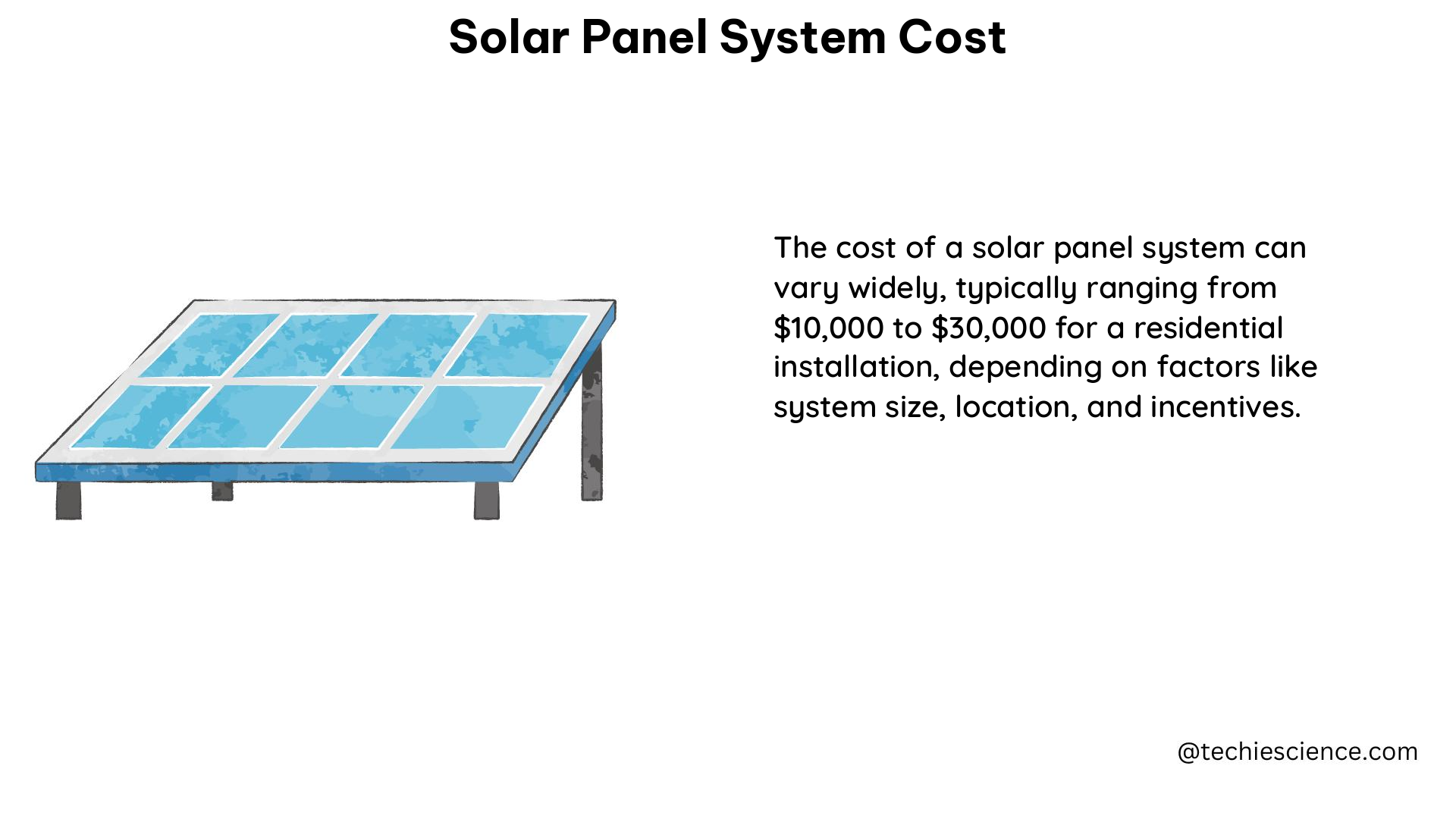The cost of a solar panel system can vary widely depending on a number of factors, including the size of the system, the type of panels used, the complexity of the installation, and the location. However, there are some general trends and data points that can provide a sense of what a typical solar panel system might cost.
Understanding the Installed Cost of Solar PV Systems
According to a report by the National Renewable Energy Laboratory (NREL), the installed cost of solar photovoltaic (PV) systems in the United States has declined significantly in recent years. In Q1 2023, the median installed cost for:
- Residential PV systems was $2.75 per watt
- Commercial PV systems was $1.85 per watt
- Utility-scale PV systems was $0.99 per watt
It’s important to note that these costs are for the total installed system, including not only the panels themselves but also other components such as inverters, wiring, and mounting hardware, as well as the cost of labor and permitting. The cost of the panels themselves typically makes up a significant portion of the total cost, but it is not the only factor.
Residential PV System Costs
In terms of specific system sizes, the NREL report provides some data on the installed cost of residential PV systems:
| System Size | Median Installed Cost |
|---|---|
| 5 kW | $13,750 |
| 10 kW | $26,500 |
These costs include all components and labor, not just the panels.
Evaluating the Price per Watt ($/W)

Another way to look at the cost of a solar panel system is in terms of the “price per watt” ($/W), which is simply the total cost of the system divided by the number of watts of capacity. According to the NREL report, the national average solar price per watt was $1.38/W as of the first half of 2023.
It’s important to note that this average includes a wide range of system sizes and types, so the price per watt for a specific system may be higher or lower.
Factoring in Incentives and Rebates
In addition to the installed cost of the system, it’s also important to consider any incentives or rebates that may be available to help offset the cost. For example, the federal Investment Tax Credit (ITC) allows homeowners and businesses to claim a tax credit of up to 30% of the cost of a solar panel system. There may also be state or local incentives available, depending on where you live.
Technical Specifications to Consider
When it comes to the technical specifications of a solar panel system, there are a few key factors to consider:
-
Panel Efficiency: This refers to how well the panels are able to convert sunlight into electricity. Higher-efficiency panels can generate more electricity in a given amount of space, but they also tend to be more expensive.
-
System Capacity: The capacity of the system, typically measured in watts or kilowatts (kW), will determine how much electricity it is able to generate, and will be a key factor in determining the cost.
-
Inverter Type: The type of inverter used in the system can also impact the cost, as different inverter technologies have different performance and cost characteristics.
-
Mounting System: The type of mounting system used to install the panels can also affect the overall cost of the system.
-
Warranty Coverage: The warranty coverage provided by the manufacturer can also be an important factor in the overall cost of the system.
DIY Solar Panel System Installation
It is possible to install a solar panel system yourself, but it can be a complex and time-consuming process. It’s important to have a good understanding of electrical systems and building codes, and to be comfortable working with tools and equipment. If you’re considering a DIY installation, it’s a good idea to do thorough research and consider seeking advice from a professional.
Conclusion
The cost of a solar panel system can vary widely depending on a number of factors, but there are some general trends and data points that can provide a sense of what a typical system might cost. It’s important to consider not only the installed cost of the system, but also any incentives or rebates that may be available to help offset the cost. When it comes to the technical specifications of a solar panel system, factors such as efficiency, capacity, inverter type, and warranty coverage are all important to consider. And while it is possible to install a solar panel system yourself, it can be a complex and time-consuming process that requires a good understanding of electrical systems and building codes.
References:
– Evaluating the causes of cost reduction in photovoltaic modules
– Cost benefit analysis for getting solar panels (please check my logic …)
– Solar Installed System Cost Analysis – NREL
– Quantifying the value of a solar installation: some helpful metrics

The lambdageeks.com Core SME Team is a group of experienced subject matter experts from diverse scientific and technical fields including Physics, Chemistry, Technology,Electronics & Electrical Engineering, Automotive, Mechanical Engineering. Our team collaborates to create high-quality, well-researched articles on a wide range of science and technology topics for the lambdageeks.com website.
All Our Senior SME are having more than 7 Years of experience in the respective fields . They are either Working Industry Professionals or assocaited With different Universities. Refer Our Authors Page to get to know About our Core SMEs.